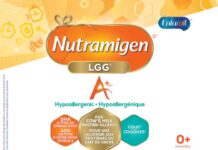OTTAWA – This update reflects additional findings and details about the ongoing outbreak investigation. The ongoing collaborative investigation has linked romaine lettuce harvested in a specific growing region of California to the outbreak.
As of November 27, 2018, the Canadian Food Inspection Agency (CFIA) has implemented new actions to ensure affected product is not available in the Canadian marketplace and to prevent the import of romaine lettuce from the affected U.S. growing region into Canada. While these actions are being implemented in the Canadian marketplace, the Public Health Agency of Canada continues to advise residents in the affected provinces of Ontario, Quebec and New Brunswick to avoid eating romaine lettuce and salad mixes containing romaine lettuce, unless consumers can identify that the romaine lettuce being purchased did not come from an affected growing region in California outlined on the U.S. FDA’s website.
On November 26, 2018 the U.S. Food and Drug Administration and U.S. Centers for Disease Control and Prevention, as well as the Canadian Food Inspection Agency released statements related to the ongoing outbreak investigation. This notice will continue to be updated as the outbreak investigation evolves.
Why you should take note
The Public Health Agency of Canada is collaborating with provincial public health partners, the Canadian Food Inspection Agency (CFIA), Health Canada, as well as the United States Centers for Disease Control and Prevention (U.S. CDC) and the United States Food and Drug Administration (U.S. FDA), to investigate an outbreak of E. coli infections in Ontario, Quebec, New Brunswick, and several U.S. states.
In Canada, based on the investigation findings to date, exposure to romaine lettuce has been identified as a source of the outbreak. Through a collaborative investigation between public health and food safety partners in Canada and the United States preliminary traceback information indicates that the contaminated romaine lettuce was harvested in California. Specifically, the U.S. FDA has indicated that the romaine lettuce was harvested in the Central Coast growing regions of northern and central California. It has been determined that romaine lettuce grown in Canada, including hydroponic romaine lettuce and romaine lettuce grown in green-houses, is not associated with this outbreak. The investigation is ongoing to determine the cause of contamination in romaine lettuce coming from the affected harvest regions in California.
As of November 27, 2018 the CFIA has implemented new actions to ensure affected product is not available in the Canadian marketplace and to verify that romaine lettuce from the areas identified in the U.S. FDA’s investigation is not being admitted to Canada. The CFIA has advised distributors, importers, restaurants, retailers, and institutions not to distribute, import, sell, serve, or use romaine lettuce and products containing romaine lettuce harvested in the Central Coast growing regions of northern and central California during the 2018 growing season, as identified by the U.S. FDA.
While these actions are being implemented in the Canadian marketplace, the Public Health Agency of Canada continues to advise residents in the affected provinces of Ontario, Quebec and New Brunswick to avoid eating romaine lettuce and salad mixes containing romaine lettuce, unless consumers can identify that the romaine lettuce being purchased did not come from an affected growing region in California outlined on the U.S. FDA’s website. Retailers and industry partners are now working to bring romaine lettuce into the Canadian marketplace from growing regions not associated with the outbreak and to help consumers easily identify the origin of romaine lettuce in the Canadian marketplace. Canadians who are travelling to the U.S., or who shop for groceries across the border and purchase romaine lettuce in the U.S. are advised to follow the U.S. CDC’s advice for U.S. consumers found on their website.
The outbreak investigation is ongoing, and this public health notice will be updated as the Canadian investigation evolves.
How does lettuce become contaminated with E. coli
E. coli are bacteria that live naturally in the intestines of cattle, poultry and other animals. A common source of E. coli illness is raw fruits and vegetables that have come in contact with feces from infected animals. Leafy greens, such as lettuce, can become contaminated in the field by soil, water, animals or improperly composted manure. Lettuce can also be contaminated by bacteria during and after harvest from handling, storing and transporting the produce. Contamination in lettuce is also possible at the grocery store, in the refrigerator, or from counters and cutting boards through cross-contamination with harmful bacteria from raw meat, poultry or seafood. Most E. coli strains are harmless to humans, but some varieties cause illness.
Investigation summary
In Canada, as of November 29, 2018, there have been 24 confirmed cases of E. coli illness investigated in Ontario (4), Quebec (17), New Brunswick (1), and British Columbia (2). The illnesses in British Columbia were related to travel to Quebec, Ontario and the United States. Individuals became sick between mid-October and early November 2018. Eight individuals have been hospitalized, and one individual suffered from hemolytic-uremic syndrome (HUS), which is a severe complication that can result from an E. coli infection. No deaths have been reported. Individuals who became ill are between 5 and 93 years of age. The majority of cases (54%) are female.
Most of the individuals who became sick reported eating romaine lettuce before their illnesses occurred. Individuals reported eating romaine lettuce at home, as well as in prepared salads purchased at grocery stores, or from menu items ordered at restaurants and fast food chains.
Laboratory analysis indicates that the illnesses reported in this outbreak are genetically related to illnesses reported in a previous E. coli outbreak from December 2017 that affected consumers in both Canada and the U.S. This tells us that the same strain of E. coli is causing illness in Canada and the US as was seen in 2017 and it suggests there may be a reoccurring source of contamination. Investigators are using evidence collected in both outbreaks to help identify the possible cause of the contamination in these events.
The CFIA is working with public health officials and the U.S. FDA to determine the source of the contamination in the romaine lettuce that was harvested in the Central Coast growing regions of northern and central California. As part of the food safety investigation, romaine lettuce was sampled and tested. To date, all products that have been tested have been negative for E. coli. The CFIA has advised industry not to import, distribute, sell, serve, or use romaine lettuce from the suspect areas in California identified in the U.S. FDA’s investigation, and they are working to verify that these new actions are being implemented in the Canadian marketplace.
Who is most at risk
This outbreak strain known as E. coli O157 is more likely than other strains to cause severe illness. Pregnant women, those with weakened immune systems, young children and older adults are most at risk of developing serious complications.
Most people who become ill from an E. coli infection will recover completely on their own. However, some people may have a more serious illness that requires hospital care or long-lasting health effects. In rare cases, some individuals may develop life-threatening symptoms, including stroke, kidney failure and seizures, which could result in death. It is possible for some people to be infected with the bacteria and to not get sick or show any symptoms, but to still be able to spread the infection to others.
What you should do to protect your health
It is difficult to know whether a product is contaminated with E. coli because you can’t see, smell or taste it. Romaine lettuce can have a shelf life of up to five weeks, and therefore it is possible that contaminated romaine lettuce purchased over the last few weeks may still be in your home.
As of November 27, 2018, the CFIA has implemented new actions to ensure affected product is not available in the Canadian marketplace and to prevent the import of romaine lettuce from the affected U.S. growing region into Canada. While these actions are being implemented in the Canadian marketplace, the Public Health Agency of Canada continues to advise residents in the affected provinces of Ontario, Quebec, and New Brunswick to avoid eating romaine lettuce and salad mixes containing romaine lettuce, unless consumers can identify that the romaine lettuce being purchased did not come from an affected growing region in California outlined on the U.S. FDA’s website. Retailers and industry partners are now working to bring romaine lettuce into the Canadian marketplace from growing regions not associated with the outbreak and to help consumers easily identify the origin of romaine lettuce in the Canadian marketplace.
Residents in affected provinces are also advised to discard any romaine lettuce in their home purchased before November 29, 2018, and to properly wash and sanitize any containers or bins that have come in contact with romaine lettuce. Canadians who are travelling to the U.S., or who shop for groceries across the border and purchase romaine lettuce in the U.S. are advised to follow the U.S. CDC’s advice for U.S. consumers found on their website.
This advice includes all types or uses of romaine lettuce, such as whole heads of romaine, hearts of romaine, and bags and boxes of precut lettuce and salad mixes that contain romaine, including baby romaine, spring mix, and Caesar salad.
Symptoms
People infected with E. coli can have a wide range of symptoms. Some do not get sick at all, though they can still spread the infection to others. Others may feel as though they have a bad case of upset stomach. In some cases, individuals become seriously ill and must be hospitalized.
The following symptoms can appear within one to ten days after contact with the bacteria:
- nausea
- vomiting
- headache
- mild fever
- severe stomach cramps
- watery or bloody diarrhea
Most symptoms end within five to ten days. There is no real treatment for E. coli infections, other than monitoring the illness, providing comfort, and preventing dehydration through proper hydration and nutrition. People who develop complications may need further treatment, like dialysis for kidney failure. You should contact your health care provider if symptoms persist.
What the Government of Canada is doing
The Government of Canada is committed to food safety. The Public Health Agency of Canada leads the human health investigation into an outbreak and is in regular contact with its federal, provincial and territorial partners to monitor the situation and to collaborate on steps to address an outbreak.
Health Canada provides food-related health risk assessments to determine whether the presence of a certain substance or microorganism poses a health risk to consumers.
The Canadian Food Inspection Agency conducts food safety investigations into the possible food source of an outbreak.
The Government of Canada will continue to update Canadians as new information related to this investigation becomes available.
Additional information
- Canadian Food Inspection Agency’s Statement
- Canadian Food Inspection Agency’s Notice to Industry
- Statement from the Deputy Chief Food Safety Officer
- New Brunswick Department of Health News Release
- Leafy Greens
- E. coli
- Produce Safety
- General Food Safety Tips
- Recalls and safety alerts mobile app
- United States Food and Drug Administration
SOURCE Public Health Agency of Canada







